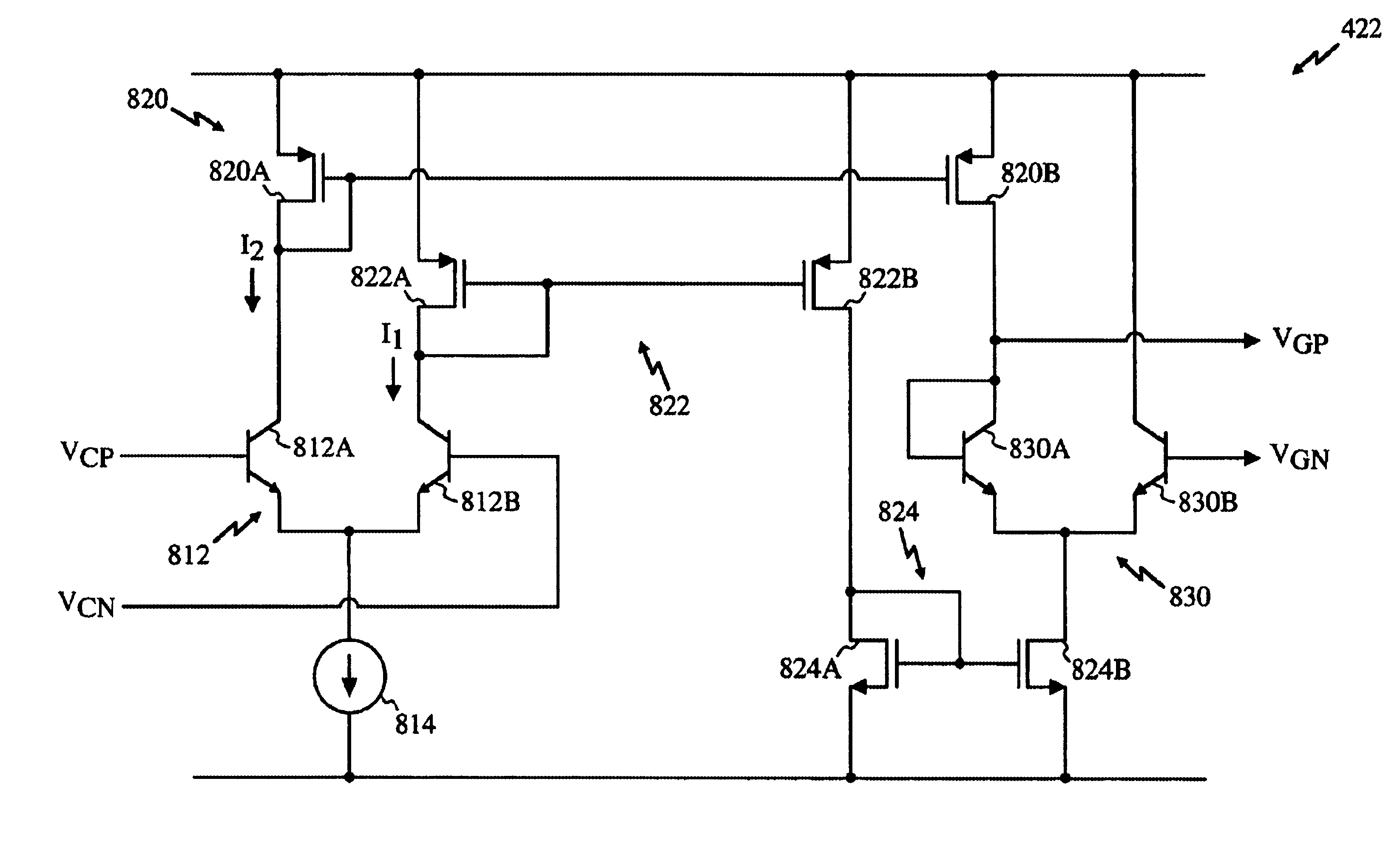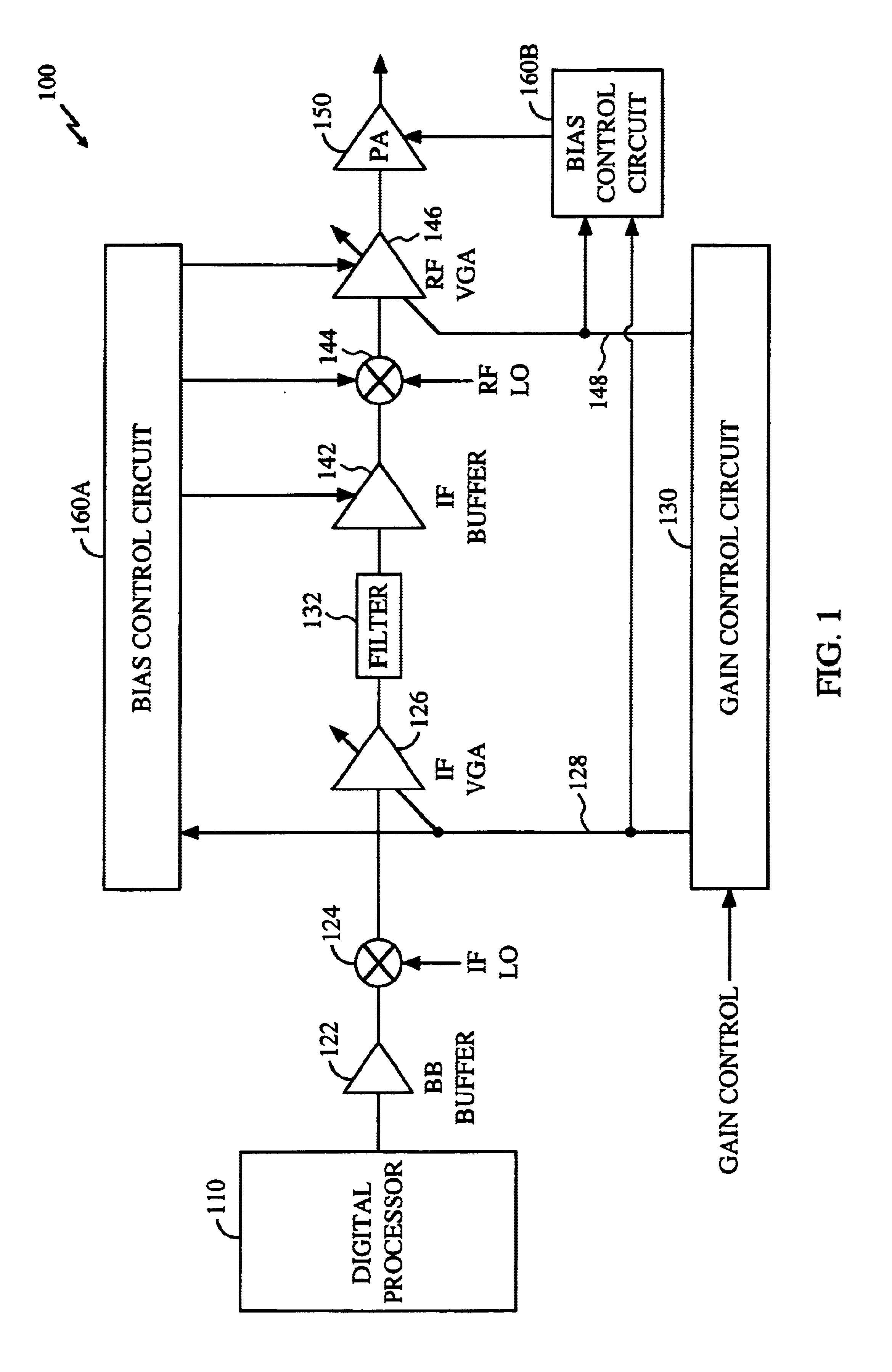Gain linearizer for variable gain amplifiers
a variable gain amplifier and gain linearizer technology, applied in the field of communication circuits, can solve the problems of imposing a difficult specification on the required transmit power control range, degraded performance, and more difficult or difficult to accurately set the transmit output power to a particular level
- Summary
- Abstract
- Description
- Claims
- Application Information
AI Technical Summary
Benefits of technology
Problems solved by technology
Method used
Image
Examples
Embodiment Construction
FIG. 1 shows a simplified block diagram of an embodiment of a transmitter 100. A digital processor 110 generates data, encodes and modulates the data, and converts the digitally processed data into an analog signal. The analog signal is provided to a baseband (BB) buffer 122 that buffers the signal and provides the buffered signal to a mixer 124. Mixer 124 also receives a local sinusoid at an intermediate frequency (IF LO), and upconverts the buffered baseband signal with the IF LO to generate an IF signal. The IF signal is provided to an IF variable gain amplifier (IF VGA) 126 that amplifies the signal with a gain determined by a gain control signal 128 from a gain control circuit 130. The amplified IF signal is provided to a filter 132 that filters the IF signal to remove out-of-band noise and undesired signals.
The filtered IF signal is provided to an IF buffer 142 that buffers the signal and provides the buffered IF signal to a mixer 144. Mixer 144 also receives a local sinusoid ...
PUM
 Login to View More
Login to View More Abstract
Description
Claims
Application Information
 Login to View More
Login to View More - R&D
- Intellectual Property
- Life Sciences
- Materials
- Tech Scout
- Unparalleled Data Quality
- Higher Quality Content
- 60% Fewer Hallucinations
Browse by: Latest US Patents, China's latest patents, Technical Efficacy Thesaurus, Application Domain, Technology Topic, Popular Technical Reports.
© 2025 PatSnap. All rights reserved.Legal|Privacy policy|Modern Slavery Act Transparency Statement|Sitemap|About US| Contact US: help@patsnap.com



